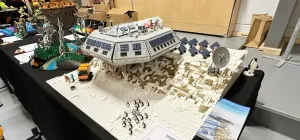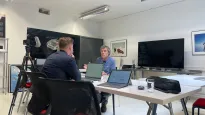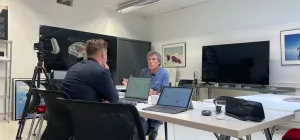BELARE Team Members Build Solar Power Units for Scientists Working in the Field

Scientists who are concerned about the carbon footprint that doing research in Antarctica can leave are certainly happy that the Princess Elisabeth Antarctica - the world’s first polar research station designed and built to run entirely on renewable energy - goes a long way in reducing the carbon footprint their research leaves. However, when scientists need to conduct research in the field for extended periods of time, they often need to take diesel-powered generators to run their scientific equipment.
A cleaner solution
Instead of having to rely on polluting diesel-powered generators for all of their energy needs in the field, Belgian engineer Guus Luppens, who’s in charge of increasing the energy production capacity of the Princess Elisabeth Antarctica over the next several seasons, has teamed up with fellow engineer Johan De Muylder to create solar-powered energy units that scientists can use while on extended research missions in the field.
The two engineers - who together work at a firm in Belgium called Pull The Plug, which installs solar panels on peoples’ homes - designed and built two kinds of solar power units that scientists can take into the field. Now at the Princess Elisabeth station for a few weeks, they’ve been able to take advantage of the good weather and the access to the materials at the station to create portable solar power units and a mobile solar-powered container unit.
Power units for field equipment
The first device the two engineers pre-assembled already in Belgium before leaving for Antarctica is a relatively small and easy to transport mobile solar power unit. It consists of two solar panels mounted on a metal frame about 1,5m high, an inverter, and a 24-Volt battery to store energy produced. The battery powers any equipment that is hooked up to it.
The mobile solar power units are able to produce up to 25 kWh per day and can easily be transported into the field by sledge and set up practically anywhere. Three of these mobile solar power units will be available for scientists to use in the field to power small equipment.
BELARE team leader Alain Hubert also plans to take a team and install two of these mobile solar power units to supply energy to a new antenna that will be palmed at Vesthaugen Nunatak about 30 km away from the Princess Elisabeth station. The antenna will serve as a relay point for radio communication with the new intercontinental Perseus Airstrip 60 km north of the station.
Converting a container into a power unit
Guus and Johan took some time to equip a mobile container unit with 3000 Watt peak of solar panels and batteries to store the energy produced. The mobile container unit is a large mobile power unit that can be used to provide energy to much larger scientific equipment while in the field.
They affixed solar panels to all sides of the container unit, along with inverters and several batteries. The entire container was mounted on runners, allowing it to be easily towed by a Prinoth tractor in the field.
Each container unit is able to store up to 30 kWh of energy, making them very powerful devices.
Scientists from the Federal Polytechnic School of Lausanne (EPFL) in Switzerland working on the POPE project are already using the solar powered container unit to power a large radar device for their research.
“Normally, scientists would need to expend 50L of fuel a day to power such a machine with a generator,” said Guus. “Now, with these solar powered container units, they can save 50L of fuel along with the CO2 emissions that go with burning that fuel.”
The container units can also be used to power appliances such as laptops, and other devices that scientists use in the field to provide more of the comforts of home such as a stove or a coffee maker - all with clean, renewable energy!






















